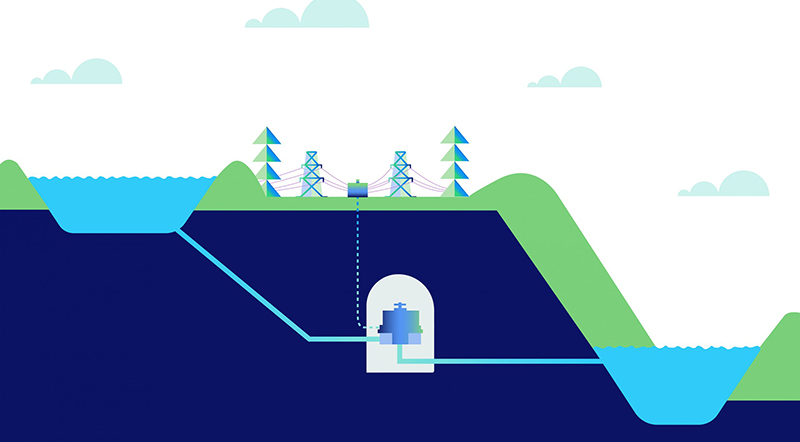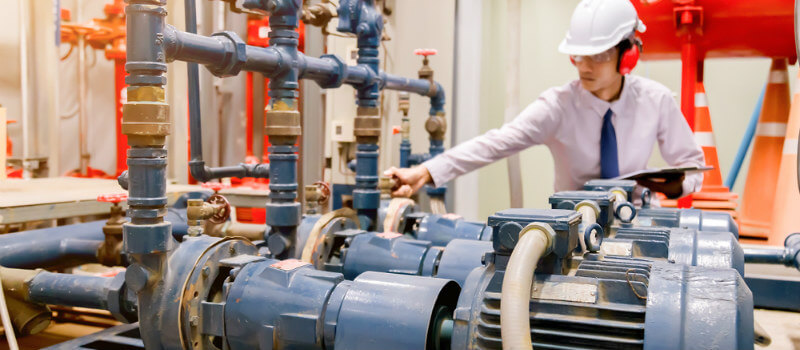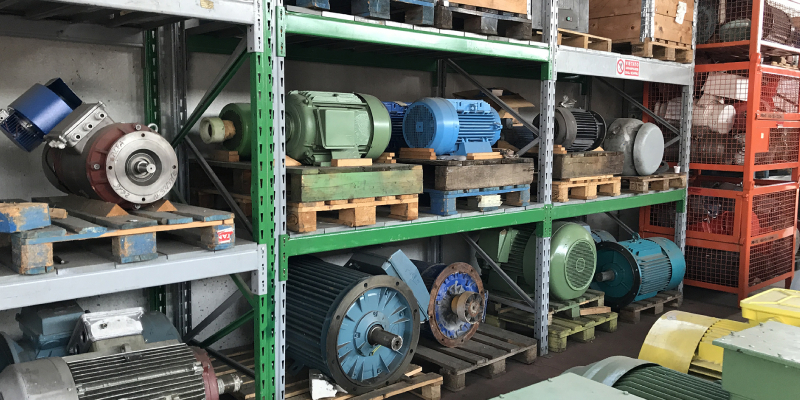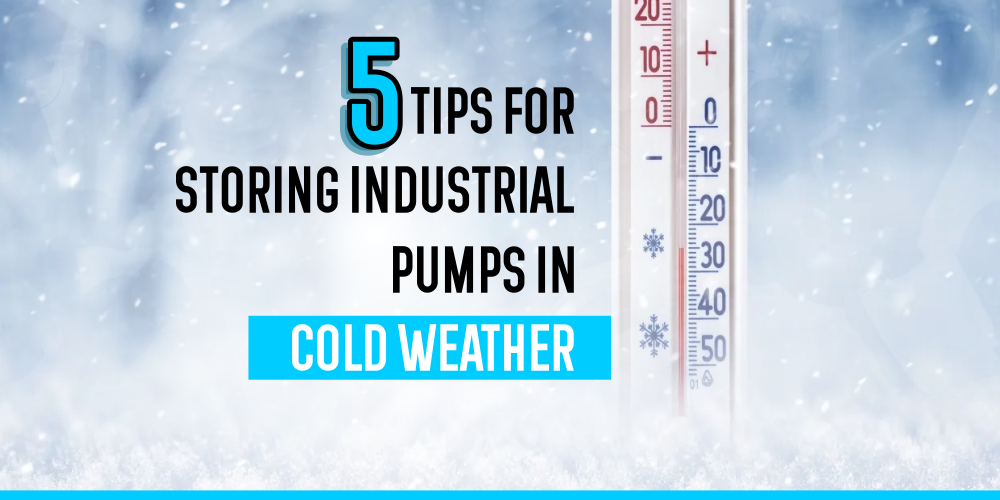Industrial pumps are vital equipment in various industrial processes. However, these pumps might get damaged during cold weather if not stored correctly. In addition, the cold weather can cause the liquid inside the pumps to freeze, causing severe complications. Therefore, it’s essential to store industrial pumps correctly during cold weather.
1 Choosing a Suitable Location for Pump Storage
- When selecting a suitable location for storing industrial pumps during cold weather, it’s essential to consider several factors. First, the storage area should be dry, clean, and moisture-free. Moisture can cause the pump’s components to rust or corrode, leading to damage. Therefore, the storage area should be well-ventilated to prevent moisture build-up.
- The storage area should be free of direct sunlight or heat sources. Exposure to direct sunlight or heat can cause the pump’s parts to expand and contract, leading to damage. Therefore, if possible, store the pump in a location protected from direct sunlight and heat sources.
- It’s vital to store the pump in a secure location. Industrial pumps are valuable equipment, and protecting them from theft or damage is essential. The storage area should be safe and accessible only to authorized personnel.
- It’s necessary to consider the pump size when choosing a storage location. The storage area should be spacious enough to accommodate the pump, and there should be enough room to move around the pump during storage.
- It’s recommended to store the pump on a pallet or a stand. Keeping the pump on a pallet or stand prevents it from sitting directly on the ground, which can cause damage to the pump’s base.
When selecting a suitable location for storing industrial pumps during cold weather, it’s essential to consider factors such as moisture, direct sunlight or heat sources, security, size of the pump, and storage equipment. By choosing a suitable location for storing the pump, you can ensure that the pump remains in good condition during cold weather.

2 Preparation of the Pump for Storage
Proper pump preparation before storage is essential to prevent damage during cold weather. The following are some essential steps to prepare the pump for storage:
- Draining the Pump: The first step in preparing the pump for storage is to drain all the liquid from the pump. Any liquid left in the pump can freeze during cold weather, damaging the pump’s components. To drain the pump, open all the drain plugs and allow the liquid to flow.
- Cleaning the Pump: After draining the liquid, cleaning the pump thoroughly to remove debris or dirt is essential. Use a soft-bristled brush or a cloth to remove dirt or debris from the pump’s surface. In addition, any residual liquid should be wiped off using a clean cloth.
- Drying the Pump: After cleaning the pump, it’s crucial to dry it thoroughly. Any moisture left in the pump can lead to corrosion or rust, damaging the pump’s components. To dry the pump, use a clean cloth or a compressed air blower to remove moisture from the pump’s surface.
- Removing Non-Essential Parts: It’s recommended to remove any non-essential parts, such as gaskets, seals, or hoses, from the pump before storage. These parts are prone to damage during storage and may require replacement when the pump is put back into service.
- Protective Coating: Applying a protective coating to the pump’s exterior surfaces is recommended after cleaning and drying the pump. The coating will protect the pump from corrosion and rust during storage. A silicone spray or a light layer of oil can be applied to the pump’s surface to protect it from moisture and rust.
Proper pump preparation before storage is essential to prevent damage during cold weather. Draining the pump, cleaning it, drying it, removing non-essential parts, and applying a protective coating are all essential steps in preparing the pump for storage. Following these steps ensures the pump remains in good condition during cold weather.

3 Regular Inspections of the Pump during Storage
Inspecting the pump regularly ensures it remains in good condition during storage. The following are some essential steps to examine the pump during storage:
- Visual Inspection: Regularly inspect the pump for any signs of damage or corrosion. Check the pump’s surface, motor, and all other parts for any signs of rust or corrosion. If you notice any damage, address it immediately to prevent it from worsening.
- Operational Inspection: Regularly check the pump’s internal components to ensure they remain in good condition. Turn on the pump and run it for a few minutes to ensure it’s still functioning correctly. If the pump is not working correctly, it may require maintenance before being returned to service.
- Moisture Inspection: Check the pump regularly for any signs of moisture or condensation. Water can cause corrosion and rust, damaging the pump’s components. If you notice any moisture, use a clean cloth to dry it immediately.
- Storage Environment Inspection: Inspect the storage area regularly to ensure it remains dry, clean, and free of moisture or debris. Ensure the storage area is well-ventilated, secure, and accessible only to authorized personnel.
Regular pump inspections during storage ensure it remains in good condition. Visual inspections, operational inspections, moisture inspections, and storage environment inspections are all essential to inspecting the pump during storage. By following these steps, you can ensure that the pump remains in good condition during cold weather and is ready for use.

4 Maintenance and Preparing the Pump for Use
After cold weather ends, it’s essential to properly prepare the pump for use by performing maintenance and testing. The following are some essential steps in preparing the pump for use:
- Cleaning and Inspection: Thoroughly clean the pump and inspect it for any signs of damage. Check the pump’s exterior and interior for any signs of corrosion or rust. Replace any damaged or corroded parts before using the pump.
- Reassembly and Testing: Reassemble the pump and test it to ensure its functioning correctly. Turn on the pump and run it for a few minutes to ensure it’s working perfectly. If the pump is not working correctly, it may require maintenance before being put into service.
- Fluid Replacement: Replace the fluid in the pump with fresh juice before using it. Use the manufacturer’s recommended fluid for optimal performance.
- Oil and Grease Replacement: Check the pump’s oil and grease levels and replace them if necessary. Use the manufacturer’s recommended oil and grease for optimal performance.
- Safety Inspection: Inspect the pump’s safety features, including pressure gauges, relief valves, and safety switches, to ensure they function correctly. Replace any damaged safety features before using the pump.
Proper maintenance and preparation of the pump are crucial to ensure it’s ready for use after cold weather. Cleaning and inspection, reassembly and testing, fluid replacement, oil and grease replacement, and safety inspection are all essential steps in preparing the pump. By following these steps, you can ensure that the pump remains in good condition and is ready for help.

5 Choosing the Right Storage Solution
Choosing the proper storage solution for your pump is critical in protecting it from cold weather damage. The following are some factors to consider when selecting the appropriate storage solution:
- Temperature Control: The storage solution should have temperature control to protect the pump from extreme cold or heat. Ideally, the temperature should be kept between a specific temperature for optimal storage conditions.
- Dry Environment: The storage solution should be dry to prevent moisture build-up, which can cause corrosion and rust.
- Security: The storage solution should be secure to prevent unauthorized access, theft, or damage to the pump.
- Accessibility: The storage solution should be easily accessible to authorized personnel for regular inspections, maintenance, and pump testing.
- Space: The storage solution should have sufficient space to store the pump without overcrowding, which can lead to damage or accidents.
Choosing the proper storage solution is essential in protecting the pump from cold weather damage. Temperature control, a dry environment, security, accessibility, and space are all critical factors when choosing the proper storage solution. By following these steps, you can ensure that the pump remains in good condition during cold weather and is ready for use.
Pump Safety equals Better Functioning.
Storing industrial pumps during cold weather requires careful preparation and storage. Choosing an appropriate storage location, preparing the pump for storage, applying the protective coating and lubrication, properly storing the pump, and regular inspection are all necessary to keep the pump during cold weather.
Proper storage of the pump ensures that the pump remains in good condition and prevents damage during storage. Following this article’s guidelines, you can ensure that your industrial pump remains in excellent condition during cold weather.
Comments are closed.

